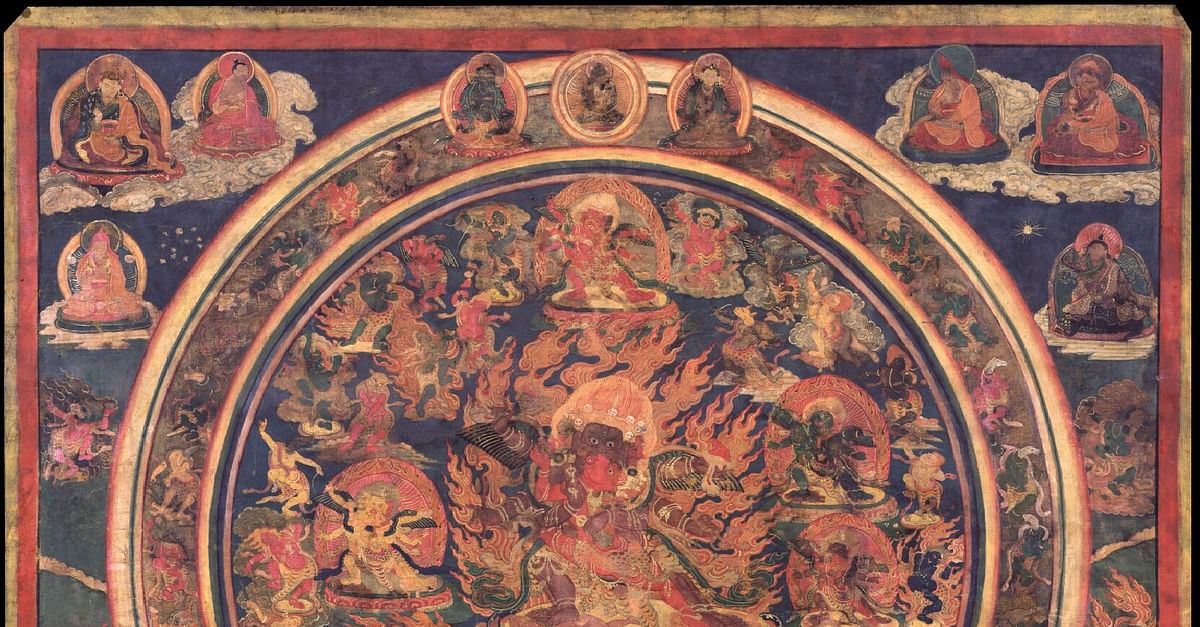The Tibetan Book of the Dead, also known as Bardo Thodol or Liberation Through Hearing During the Intermediate State, is a text from the Tibetan Buddhist tradition that provides guidance for the deceased during the period between death and rebirth. It is considered one of the most important and profound works of Tibetan Buddhism, and has become increasingly popular in the West in recent decades.
The origins of the Tibetan Book of the Dead can be traced back to the 8th century, when the Indian Buddhist master Padmasambhava introduced the teachings of Vajrayana Buddhism to Tibet. The text itself was composed in the 14th century by the Tibetan scholar and saint, Karma Lingpa, who claimed to have discovered it as a hidden treasure.
The Tibetan Book of the Dead is divided into three parts, each corresponding to a different phase of the after-death experience. The first part, called the Chikhai Bardo, is the period immediately following death, when the consciousness of the deceased separates from the physical body. During this phase, the text provides instructions on how to recognize the various visions and hallucinations that arise, and how to use them as opportunities for spiritual growth and liberation.
The second part, called the Chonyid Bardo, is the period when the consciousness experiences a series of vivid and intense visions. These visions are said to reflect the karmic imprints that the deceased has accumulated throughout their life, and can be both beautiful and terrifying. The text provides guidance on how to navigate these visions and use them to gain insight into the nature of reality.
The third and final part, called the Sidpa Bardo, is the period when the consciousness is preparing to be reborn. During this phase, the text provides instructions on how to recognize the signs of the impending rebirth, and how to direct one's consciousness towards a favorable rebirth.
Throughout the text, there are also numerous prayers, mantras, and visualizations that are meant to help the deceased achieve liberation and avoid falling into lower realms of existence. These practices are intended to be performed by the living on behalf of the deceased, and are often accompanied by elaborate rituals and offerings.
The Tibetan Book of the Dead is not just a guide for the deceased, but also serves as a profound source of wisdom and insight for the living. Its teachings on impermanence, karma, and the nature of consciousness are central to the Buddhist path, and can help us cultivate a deeper understanding of our own lives and the world around us.
In recent years, there has been a growing interest in the Tibetan Book of the Dead among Western audiences, and numerous translations and commentaries have been published. While some critics have raised concerns about cultural appropriation and the commercialization of a sacred text, many practitioners and scholars believe that the widespread dissemination of the teachings can help bring greater understanding and compassion to the world.
Overall, the Tibetan Book of the Dead is a profound and timeless text that offers a unique perspective on the nature of life, death, and consciousness. Its teachings remain relevant and inspiring to people of all backgrounds and traditions, and continue to be a source of guidance and wisdom for generations to come.

Comments